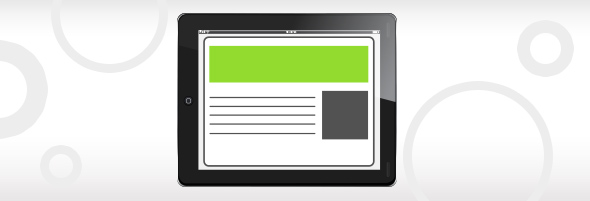After years of declining ad revenues, many publications have begun to embrace native advertising as an alternative way to monetize news products online. Although this sort of advertising has been criticized in the past as simply an advertorial, a recent study from the Online Publishers Association (OPA) has found that the use of native advertising is on the rise.
The results come from a May to June survey given to 29 OPA members, as well as interviews with 12 members. Findings show that 73 percent of those polled currently offer native advertising, while 17 percent responded they would consider it by the end of the year, making that a potential 90 percent of respondents who could be using native advertising before 2013 is over.
Already using sponsored content are big names such as Forbes and the Washington Post, while more publications are joining the revolution all the time, just take the New York Times for instance. In May, the New York Observer reported that the Times has integrated an app called Citi Bike, which features reviews and editors’ picks of restaurants, shows and events that are officially sponsored by Citi Bike. The app also helps users find nearby Citi Bike stations, as well as biking directions to restaurants. The Observer noted that the Times’ app clearly marks it as “sponsored” beneath the Citi Bike icon.
Hearst Magazines is also trying out sponsored content, providing advertisers the ability to scale across other brands such as Cosmopolitan, Good Housekeeping and Esquire, AdWeek.com reported. In addition to the marketing staff, Hearst’s editorial staff also partakes in the creation process for the ads. Publishers that include the editorial side in sponsored content writing isn’t so unusual; the OPA survey found that 57 percent of respondents said editorial had a hand in their publications’ native advertising, while 95 percent said sales participated and 71 percent said marketing was involved in the process.
As inVocus reported before, publishers such as BuzzFeed.com and The Atlantic have been criticized for the way sponsored content was handled. The Atlantic ran into trouble when it published a sponsored ad from the Church of Scientology peddling the church leader’s achievements, while BuzzFeed has been accused of violating copyright in the past. But OPA members have found little controversy surrounding their own uses of native advertising with 71 percent responding they had received no complaints, and 29 percent responding they’d only received a few.
As native advertising grows, many critics and supporters believe better guidelines and scalability are needed. AdWeek noted that AOL CEO Tim Armstrong recently said at a media discussion that publishers needed to band together because if it can’t be done to scale, it will be too expensive to create sponsored content on different platforms. Meanwhile, Google announced they would enforce proper labeling for sponsored content by lowering websites in site rankings if the search engine’s guidelines aren’t properly followed.
Ad Age’s Adam Kleinberg recently wrote an article detailing the downfalls of native advertising, one complaint being a lack of relevance to the brand, while noting the number of ads he’s found that don’t clearly state that they are sponsored. In response to this common complaint, the OPA report gives advice on best native advertising practices that included being transparent, discoverable in searches and providing value to readers and consumers.
Contrary to the naysayers, cofounder of AdsNative Saitish Polisetti wrote in a guest post at VentureBeat.com that native advertising has a bright future, especially with a scalable model on the horizon. The Video Ad Serving Template will reportedly be standardized by the Interactive Advertising Bureau sometime in the near future, providing a standard for publishers.
“The holy grail of advertising is when users regard an ad as part of their experience and worth their attention, just like a Super Bowl commercial or a glossy page in Vogue. In the digital world, the equivalent is not a banner or pre-roll video, it is a native ad,” Polisetti wrote.
Although such advertising at one time was considered an anathema in the media industry, the evolution of digital has forced publishers to explore new avenues in an effort to monetize content so that the news can keep on reporting. Move over banner ads, the reign of native advertising is just beginning.
–Katrina M. Mendolera![]()


